Even Francisco, the chef, described the taste of snails as “insípido” (I really DON’T have to translate that one into English, do I?).
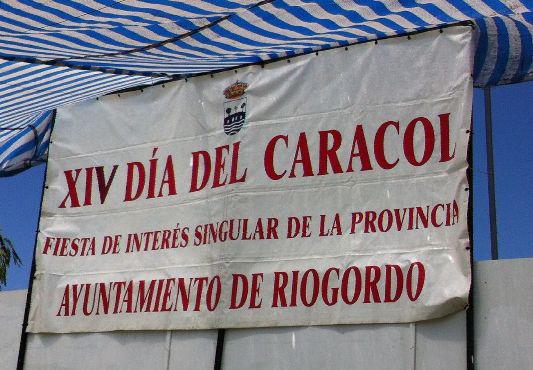 Caracoles, snails, really are the ultimate “slow food”. In every way. The preparation for Riogordo’s “Day of the Snail” began two days earlier when the snails were …. ummm … picked? Harvested? Whatever. They’re not special snails, and they’re not bred on ….. ummm …. snail farms. They are just random wild snails, taken from the campo and the sierra. Obviously there are areas where bigger, fatter ones can be found, so the ….. ummm …. snail-pluckers go out early to harvest the best ones.
Caracoles, snails, really are the ultimate “slow food”. In every way. The preparation for Riogordo’s “Day of the Snail” began two days earlier when the snails were …. ummm … picked? Harvested? Whatever. They’re not special snails, and they’re not bred on ….. ummm …. snail farms. They are just random wild snails, taken from the campo and the sierra. Obviously there are areas where bigger, fatter ones can be found, so the ….. ummm …. snail-pluckers go out early to harvest the best ones.
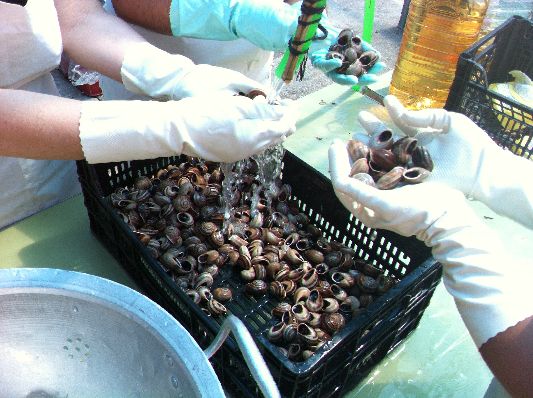
Still alive, they are washed. First in salt-water, then under a hose to remove any last bits of soil, sand, and of course the salt from the first wash.

Then into the huge pans over the big gas ring. The water starts cold and slowly warms up. This encourages the snails to come partly out of the shells, at which point the temperature is whacked up, to boil the water as quickly as possible which kills the snails.
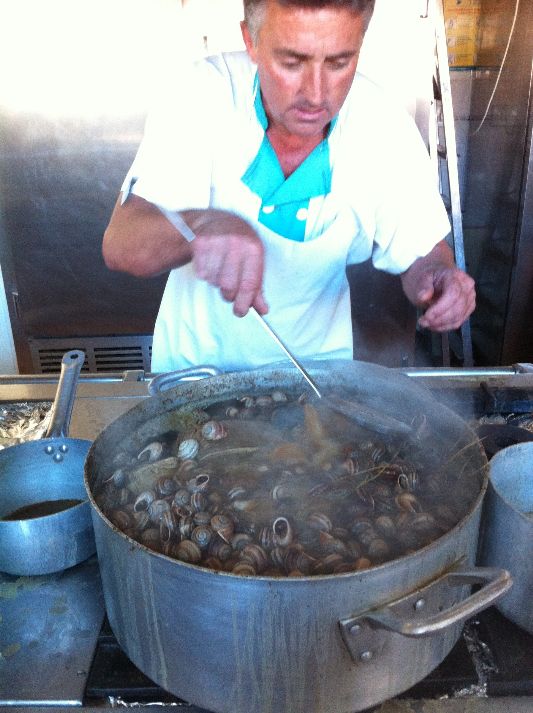
Then they go into the stock. “It’s the stock that gives them the flavour” explained Francisco. “Without it, they are insipid and tasteless.”
Elsewhere in Spain there are other Snail Festivals. The most famous is in Lleida in Catalunya, and each venue protects its own special recipe. I’d tried snails only once before, in a professional chef competition in Dorset, where they were cooked by a chef I trusted completely. He had picked armfuls of wild garlic flowers on the way to the competition, and served the snails in a thick, tasty, bright green puree. They were delicious. The traditional French recipes involve lashings of garlic, butter, white wine, and sometimes cream.
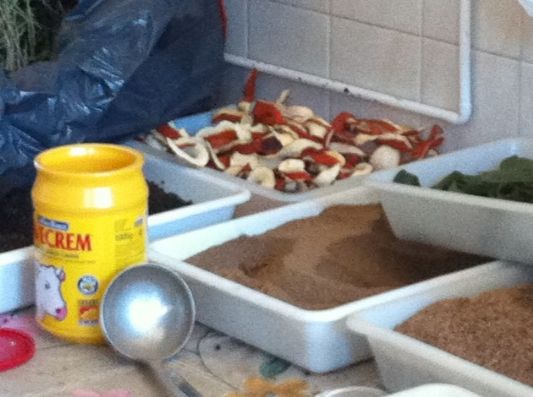 Here in Riogordo Francisco was happy to share his stock recipe. Dozens of muslin bags are made up – not dinky little bouquet garni like we’re used to; these were heavy great bags, stuffed with fresh sprigs of thyme, bay leaf, beef stock, dried orange peel, black peppercorns, chili and “snail spice mix”. The orange peel itself had taken a long time to prepare. It needed to be shaved very thinly, avoiding the pith as much as possible. Just the orange slivers of skin, laid out to dry, then added to the stock.
Here in Riogordo Francisco was happy to share his stock recipe. Dozens of muslin bags are made up – not dinky little bouquet garni like we’re used to; these were heavy great bags, stuffed with fresh sprigs of thyme, bay leaf, beef stock, dried orange peel, black peppercorns, chili and “snail spice mix”. The orange peel itself had taken a long time to prepare. It needed to be shaved very thinly, avoiding the pith as much as possible. Just the orange slivers of skin, laid out to dry, then added to the stock.
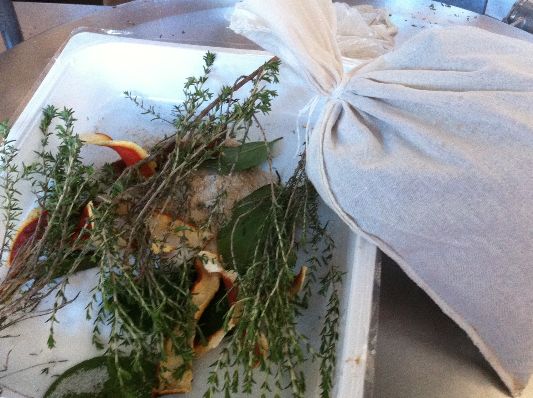 So the snails and the bags of stock go into fresh water which is boiled again, with an extra armful of thyme sprigs for good luck. It takes several hours of slow cooking to flavour the (otherwise insipid!) flesh. Once served, fresh mint is added at the last minute.
So the snails and the bags of stock go into fresh water which is boiled again, with an extra armful of thyme sprigs for good luck. It takes several hours of slow cooking to flavour the (otherwise insipid!) flesh. Once served, fresh mint is added at the last minute.
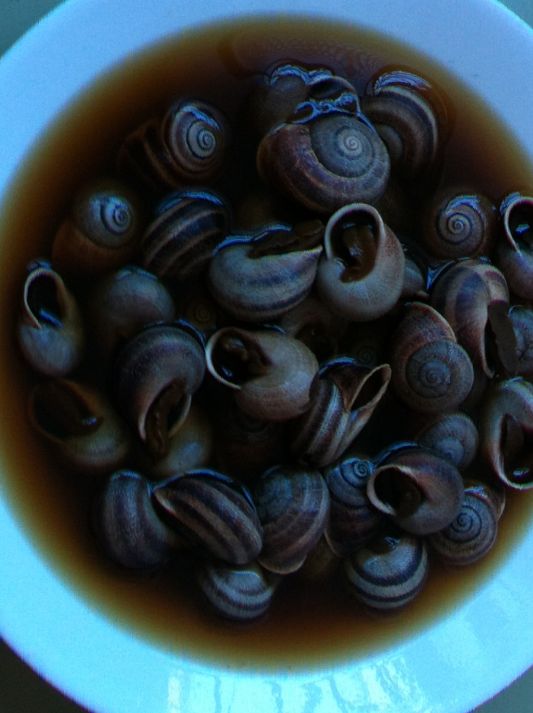
I had some. Well, it would have been rude not to. The stock HAD flavoured the snails, but personally I prefer either the French or the Dorset style. All this preparation was going on the day before the main festival in Riogordo, and Francisco assured me that 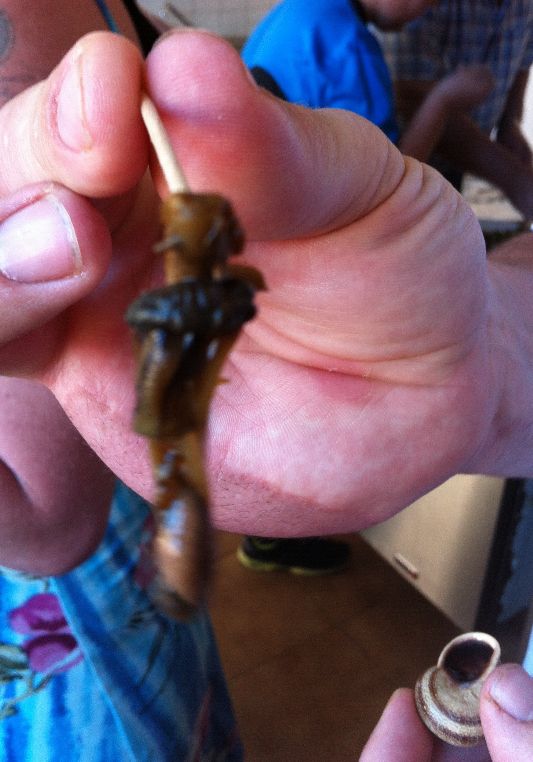 the following day the stock would have given the snails even more flavour. All the bars and restaurants would be selling snails, and there was an opportunity to taste them a dozen different ways. A “snail-crawl”, if you like (oh please yourselves!).
the following day the stock would have given the snails even more flavour. All the bars and restaurants would be selling snails, and there was an opportunity to taste them a dozen different ways. A “snail-crawl”, if you like (oh please yourselves!).
On the Sunday of the festival, I was summonsed into my little street by the other women. We had work to do. It was the Corpus Christi street decoration competition and my presence was required to …. well …. climb ladders, decorate balconies, and …… and that’s another story. It was not going to be the Riogordo snail-crawl for me after all.
© Tamara Essex 2013
THIS WEEK’S LANGUAGE POINT:
Well, not so much a language learning point, more the answer to the question we’ve all been asking ourselves …. Just how is “Paco” any sort of short form of Francisco?
Well there IS logic behind this, after all! Saint Francis of Assisi was the father of the Franciscan order of monks. Within that order his name was written as Pater Comunitatis – father of the community. “Paco” comes from the first syllable of each word. Simples!